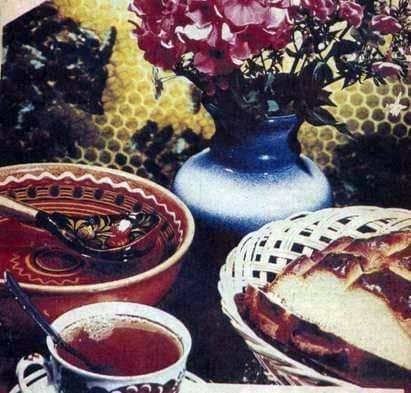
To your bees collected a lot of honey, you need to bring them closer to the mead, as the beekeepers say: “Nose to the buckwheat…” July – the middle of the summer. Good honey harvest in this months is provided by linden, buckwheat, alfalfa, sunflower, clover.
Beekeepers pre-equip each hive in such a way that it is possible to prepare an apiary for transportation in a short time (3-5 minutes for 1 hive). Kochevka is used not only for collecting nectar and pollen, but also for pollination of entomophilous cultures.
Prepare for the main honey collector in July from the spring. Good honey with nectar in nature is observed in a family that has many bees (60-70 thousand and more).
The beehive must be equipped with auxiliary ventilation, provided completely with honeycombs, protected from overheating, i. e. Located in the shade of trees and bushes.
Bees, if they fly far beyond nectar and pollen, are tired. Working bee, when it wipes its wings (cracking from the inside), is excluded from the honey collection. But the instinct sends it over and over again, until the bee, already in vain waving its wings, can not reach either the mead or the hive.
Most of all worker bees die on the road for nectar. In the summer, the bee is on average alive for 40 days.
It is known that the restoration of the framework in July distracts the bees from the intensive collection of honey. At this time, the beekeeper, opening the hive and looking at the outermost frame, knows that they must act further. When it is actively restored and filled with nectar, you need to add honeycombs or replace them with frames with sealed honey. When there are no spare honeycombs, honey should be pumped out and the honeycomb returned to the hive.
When nomadic beekeepers, amateurs unite for 4-5 men and are on duty round the clock around the apiary.
Honey can be pumped out when it is sealed by 1 / 3-2 / 3 on the height of the frame. At the end of the month, it is necessary to replace the queens in those families that were not productive. Some beekeepers change 80-100% of the queens every year. Young uteres lay eggs longer, which is very useful for the family when bees grow for the winter.
In July, it is not allowed to use chemical methods to combat varroa and other diseases, so as not to contaminate the product.
Do people need methods
Processing bees from varroatosis chemical preparations, beekeepers take care of the purity of honey and are looking for other methods to combat this disease. But herbs that contain acaracides, and are used to treat varroatosis of bees, also belong to chemical methods. Acaracides are poisonous substances from which mites die.
At one time, I was also distrustful of all chemical preparations and was looking for other ways to combat varroa. The fact that the smoke or infusion of such herbs gives excellent results in the treatment of varroatosis, you can find out not only from the beekeepers, but also from the recommendations of specialists. In particular, this alternate fumigation of bees by smoke smoke and Tansy. The first two years of such treatment of bees from varroatosis gave a good result. Families successfully overwintered, there was not much time, and I was satisfied with this method.
But for the third year, two families were killed during the wintering season. Analysis of the diving in the veterinary laboratory showed that the bees died from varroatosis.
Why is that?
Probably, because we do not know the dosing. But if they did, it’s almost impossible to determine the dose at home. Therefore, to treat bees from varroatosis, even herbs should be on a limited number of families and be sure to examine honey so that it is not clogged with by-products.
Do you still need to describe popular methods in print? I think it is necessary, because only in their search and comparable can you establish the truth.
To treat bees from varroatosis is more effective than chemical, zootechnical and physical methods.
It should be borne in mind that the Varroa mite quickly becomes accustomed to acaracids, because of which it is necessary to change these preparations every year or in a year.
Как хранить рамки с медом. Перевозка ульев с пчелами.
The bee family and its composition